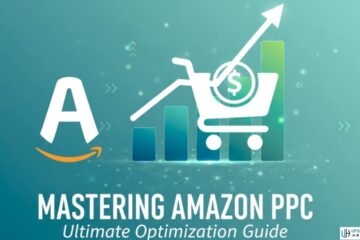Manual purchasing systems slow everything down. Paper requisitions, outdated supplier lists, and disconnected approval processes introduce delays and errors. Even with digital procurement platforms, many companies still deal with fragmented data and inconsistent workflows.
To fix this, more businesses are adopting solutions like Greenwing, which connects procurement systems directly to supplier catalogs—without losing control over internal purchasing rules. These connections, often invisible to the end user, are reshaping how procurement operates. They cut costs, increase accuracy, and make compliance far easier.
Here’s how to rethink efficiency using a more connected procurement model.
Reduce Time Spent on Sourcing
Procurement teams spend considerable time verifying vendor details, tracking down current pricing, and confirming inventory availability. With traditional catalogs, users face duplicated entries, outdated SKUs, or incompatible formats. Punchout connections remove those barriers.
Instead of uploading supplier content manually, a punchout link pulls real-time data directly from the supplier’s catalog. No updates. No uploads. The buyer accesses the supplier’s live product list through the procurement system interface, selects items, and checks out—all within approved workflows.
The result? Fewer hours spent managing catalog data. More time for strategic sourcing.
Standardize Purchasing Without Limiting Options
Departments want autonomy. Procurement wants consistency. A direct link to the supplier’s catalog delivers both.
Users can browse real-time inventory, view contract pricing, and place requests without leaving the procurement platform. Suppliers maintain their own product details, while buyers keep full oversight through budget controls and routing rules.
There’s no need to sacrifice catalog diversity to maintain compliance. Teams buy what they need, and procurement ensures it’s done right.
Improve Order Accuracy
Manual entry errors carry a cost. Incorrect SKUs, mismatched pricing, and missing specifications create delays and increase returns. These mistakes often come from copying data between systems.
Live supplier catalogs reduce this friction. All product data—descriptions, prices, part numbers—is pulled directly from the supplier. Nothing needs to be rekeyed. Items added to the shopping cart are accurate the first time, every time.

Fewer errors mean fewer change orders, less back-and-forth with suppliers, and faster fulfillment.
Maintain Better Contract Compliance
Contracts set the terms, but many companies still struggle to enforce them during daily purchasing. Employees may order from unapproved vendors or select off-contract items without realizing it.
Using punchout catalogs makes contract enforcement automatic. The catalog content reflects only approved items and negotiated pricing. Employees don’t have to remember which vendors are preferred. The system guides them to the correct source by default.
Procurement doesn’t need to police purchases after the fact. Control is built into the process.
Streamline Supplier Onboarding
Onboarding a new supplier traditionally requires uploading spreadsheets, creating static catalogs, and mapping products into categories. This takes weeks—and must be repeated every time there’s a product change.
Punchout connections eliminate those steps. The supplier controls their own catalog through their e-commerce platform. The buyer only needs to connect to the supplier’s punchout site once.
From there, any updates the supplier makes—new products, pricing changes, discontinued items—are automatically reflected in the buyer’s interface.
Less manual work. Faster onboarding. Fewer errors.
Consolidate Spend Data for Better Reporting
Purchasing data often sits in multiple locations. Some transactions happen through emails. Others through ERP systems. Many aren’t coded consistently, making it difficult to analyze trends.
With punchout-enabled procurement, all purchasing data flows through the same system. Each transaction follows a standardized format, whether it’s for office supplies, lab equipment, or contracted services.
This unified data structure supports detailed reporting, easier auditing, and improved budgeting. Finance gains visibility into spending behavior across departments—without chasing down receipts.
Support Scalable Growth
As organizations grow, their procurement demands become more complex. New departments, new locations, and new supplier relationships add volume and variability. Without automation, the burden on procurement teams grows exponentially.
Punchout catalogs scale with demand. Whether managing five suppliers or fifty, the connection process stays the same. Every new link brings in a real-time catalog with no extra upload steps or data-entry risk.
This model supports both centralized and decentralized purchasing, making it easier to accommodate growth without sacrificing operational control.
Lower Total Procurement Costs
Efficiency isn’t only about speed. It’s about reducing friction across every step of the process. From catalog management to invoice reconciliation, time saved translates to lower costs.
By using punchout connections, companies reduce maverick spend, increase purchase order accuracy, and streamline approvals. Fewer exceptions mean lower overhead for AP teams. Faster order cycles reduce inventory disruptions and supplier follow-ups.
Over time, these savings compound—cutting total procurement costs without cutting quality or vendor options.
Make IT Simpler
From a technology perspective, punchout integration doesn’t require massive customization. Most modern eProcurement systems already support cXML or OCI protocols. Many suppliers offer ready-to-use punchout catalogs designed to plug into these systems.
IT teams configure a single URL, set up authentication rules, and complete one-time testing. After that, maintenance is minimal. Catalogs update automatically through the supplier’s system.
This makes it easier for IT to support procurement goals without constant intervention.
Final Thoughts
Efficiency isn’t just about speed. It’s about precision, scalability, and control. Punchout connections offer all three without creating complexity for the user.
By linking directly to live supplier catalogs, procurement teams gain a modern toolset for managing purchases at scale. Less manual input. More accuracy. And greater visibility across the entire purchasing lifecycle.
Punchout catalogs shift procurement from reactive to proactive—delivering structure where it’s needed, and flexibility where it matters.
See Also: Strategic Planning for Business Expansion and Growth









